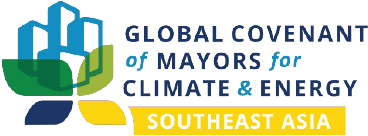Da Nang, Vietnam | Community-based Water Pollution Prevention in Tho Quang Harbour
Da Nang, Vietnam
Date: July 5, 2023

Fast Facts
- Mayor: Huynh Duc Tho
- Population: 1,374,56
- Area: 1,284.73 Km²
- GCoM Signatory since 2022
Background
Tho Quang Harbour, located in Da Nang, has been grappling with the critical issue of water pollution, posing a significant challenge for the local fishing community. Despite the implementation of several policies aimed at addressing the problem, pollution levels remained alarmingly high. Recognising the need for collective action, the harbour’s management board and the local community joined forces to identify polluting activities and develop community-based solutions to monitor and prevent the flow of sewage and trash into the bay. [1]
All stakeholders’ active participation and cooperation became clear as a critical aspect in reversing the pollution trend. Understanding the urgency of the situation, the community living near the harbour took the initiative to collaborate with relevant authorities, utilising their local knowledge and expertise. They attempted to solve the recurring issue of water pollution and restore the bay’s biological balance by harnessing the power of community-based models and implementing effective monitoring measures.
Solutions Implemented
In collaboration with the Center for Environment and Community Research (CECR), the management board of Tho Quang Harbour has actively engaged stakeholders in a series of meetings to address the pressing issues of water pollution. Representatives from fish stalls, fish trucks, and small fish processing establishments gathered to identify problems, devise solutions, delegate tasks, and develop comprehensive plans.
The community-based model for monitoring and preventing sewage discharge into the bay was launched in 2016. The implementation of a detection system to identify wastewater sources, the development of specific wastewater discharge guidelines for the bay (with assistance from the Da Nang Environmental Protection Department), the establishment of monitoring teams at discharge points, training on monitoring and reporting procedures, and regular meetings to share findings and experiences were all important components of this model.
In 2018, efforts were also made to reduce plastic waste dumped into the bay. Public awareness campaigns were conducted to discourage plastic waste disposal, emphasising citizens’ responsibility. Measures to reduce plastic bags and waste were implemented, including the distribution of instructional leaflets, the placement of decal posters at the harbour and markets, radio announcements, and direct communication with fish stalls and fishing vessel owners. Environmental workers collected and recorded sorted trash data on-site. Additionally, a “green boat” model was introduced to encourage fishermen’s involvement. Workshops on the harmful effects of plastic waste were conducted, and a movement was launched to bring waste from the sea to the shore. Commitment signing for volunteer vessel owners, as well as the establishment of a hotline for garbage collection, further supported the initiative.
Results and Solutions Learned
Continuous monitoring efforts have yielded significant results in reducing sewage discharge into Tho Quang Harbour. Moreover, in 2018, a substantial amount of plastic waste, tototalling 1,850 kg, was collected and recorded. Hundreds of fishermen have been reached through awareness campaigns and educational workshops, with 77 fishing vessel owners committing to stop dumping waste into the sea and actively sorting out resource waste and plastic bags. The management board of Tho Quang Harbour, in collaboration with the Coalition for Clean Water, has further expanded its network and engagement with the local community. Additional participants, including market vendors, women, and boat owners, have been involved in training, data collection, communication, and monitoring activities, putting in 1180 hours of time and effort.
[1] Vietnam Water Supply and Sewerage Association, “Guidance to Mobilize Community Participation in Water Resource Protection in Vietnam,” Programme Solidarité Eau, December, 2020, from http://vwsa.org.vn/en/article/2249/guidance-to-mobilize-community-participation-in-water-resource-protection-in-vietnam.html


